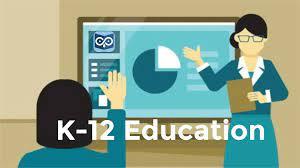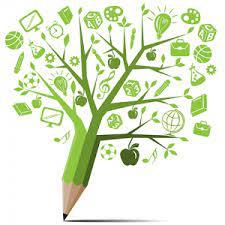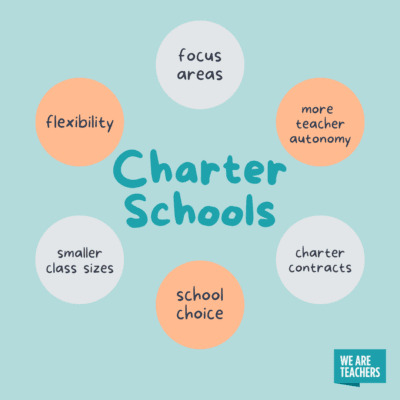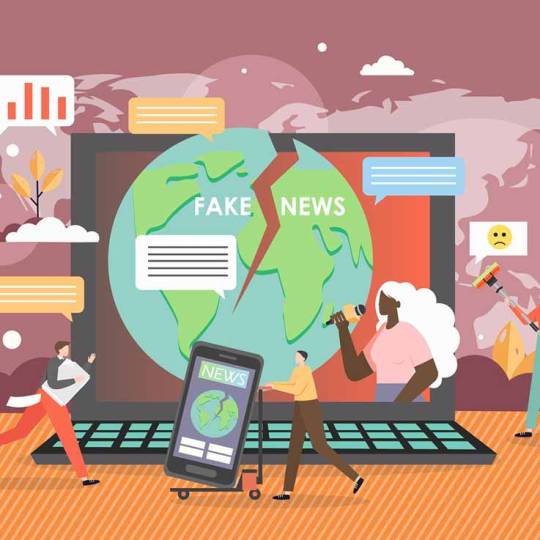Text

Title: Transforming Education with Inherited Blockchain Mechanisms
Blockchain, at its core, is a decentralized and distributed digital ledger that records transactions across multiple computers in a secure and immutable manner. It operates on the principles of transparency, immutability, and cryptographic security, making it an ideal candidate for various sectors, including education.
Integrating Blockchain into Education:
Secure Credential Verification: Traditional paper certificates and diplomas are susceptible to fraud and tampering. By migrating these credentials onto a blockchain, educational institutions can ensure that certificates are tamper-proof and can be easily verified by employers or other institutions.
Portable Learning Records: With blockchain, students can have a digital wallet containing their academic achievements, certifications, and other learning records. These can be easily shared with potential employers or other educational institutions, streamlining the application process and reducing administrative hurdles.
Micro-Credentials and Lifelong Learning: Blockchain can enable the creation of micro-credentials, smaller units of learning that showcase specific skills. This promotes a culture of lifelong learning, allowing individuals to continuously update and validate their skills as they evolve, which is especially important in today's rapidly changing job landscape.
Decentralized Learning Platforms: Traditional education systems often involve centralized platforms that control access and content. Blockchain can empower decentralized, peer-to-peer learning platforms, enabling students and educators to interact directly, thus democratizing education.
Challenges and Considerations:
Scalability: Current blockchain platforms may face scalability issues when dealing with a large number of transactions. For a widespread adoption in education, these platforms need to be able to handle the volume without compromising efficiency.
User-Friendly Interfaces: To ensure widespread acceptance, blockchain-based education systems must have intuitive interfaces that cater to both tech-savvy users and those less familiar with blockchain technology.
Standardization: For seamless data exchange and portability, standardization of blockchain-based education records and credentials is essential.
Regulatory and Legal Frameworks: The legal recognition of blockchain-based credentials and the compliance of educational institutions with existing regulations need to be addressed.
Conclusion
Inheriting blockchain mechanisms into education technology can usher in a new era of transparency, security, and innovation. By leveraging the core principles of blockchain, educational institutions can provide students with secure and easily verifiable credentials, foster lifelong learning, and create decentralized and learner-centric education systems. As technology continues to evolve, the collaboration between blockchain and education holds the promise of a brighter, more accessible future of learning.
#blockchain #education
talentserve
0 notes
Text

Title: Embracing Global Citizenship: A Vital Journey for Students
Understanding Global Citizenship
Global citizenship goes beyond the traditional identity associated with a single nation. It involves recognizing and embracing the idea that we are all part of a global community, irrespective of our cultural, ethnic, or national backgrounds. Global citizens are individuals who acknowledge their interconnectedness with the world and take responsibility for their actions on a global scale. This perspective encourages empathy, open-mindedness, and a sense of shared responsibility for addressing global issues.
1. Fostering Cultural Awareness and Diversity: Global citizenship exposes students to a rich tapestry of cultures, traditions, and perspectives. By interacting with peers from different parts of the world, students can broaden their horizons and develop a deeper understanding and appreciation for cultural diversity.
2. Empowering Active Engagement: Global citizens are not passive observers; they are active participants in shaping the world around them. Students who embrace global citizenship are more likely to engage in discussions about social, political, and environmental issues that transcend national borders.
3. Nurturing Critical Thinking and Problem-Solving Skills: Global issues are often complex and multifaceted. To address these challenges effectively, students need to develop critical thinking, problem-solving, and analytical skills.
Thus, in an era marked by rapid globalization and interconnectedness, cultivating global citizenship is no longer an option—it's a necessity. Students who embrace global citizenship gain valuable skills, perspectives, and a heightened sense of responsibility. By fostering cultural awareness, empowering active engagement, nurturing critical thinking, preparing for a globalized workforce, and contributing to sustainable development, students position themselves as proactive agents of positive change. As educators and society at large, it is our responsibility to encourage and support students on their journey towards becoming informed, empathetic, and engaged global citizens.
#globalcitizenship #citizenship #students
#talentserve
0 notes
Text

Title: Navigating the Future: Exploring K-12 Digital Education
In a rapidly evolving digital landscape, education has undergone a significant transformation, especially at the K-12 level. Traditional classrooms are increasingly being complemented, and in some cases, replaced by digital education platforms. K-12 digital education has emerged as a dynamic and innovative approach to learning, offering a plethora of benefits and opportunities for students, educators, and parents alike
The Advantages of K-12 Digital Education
Personalized Learning: One of the most compelling advantages of digital education is its ability to tailor learning experiences to individual students' needs and learning paces.
Access to Resources: Digital education eliminates the limitations of physical resources. Students can access a wide range of digital content, including e-books, videos, simulations, and interactive modules, enriching their learning experience beyond traditional textbooks.
Flexibility and Convenience: K-12 digital education offers flexibility in terms of both time and location. Students can learn at their own pace, allowing them to balance academics with extracurricular activities, hobbies, and family commitments.
Challenges to Address
Technological Barriers: While digital education offers immense potential, it also highlights the digital divide that exists among students. Not all students have access to the necessary devices and high-speed internet connections, creating disparities in learning opportunities.
Teacher Training: Educators need to be proficient in using digital tools effectively to create meaningful learning experiences. Adequate training is crucial to ensure that teachers can leverage technology to its fullest potential.
Maintaining Human Connection: Building relationships and a sense of community is an integral part of education. Ensuring that digital education maintains these human elements, such as peer interactions and teacher-student relationships, is essential.
The Future Landscape
K-12 digital education is not just a fleeting trend; it's a transformative force shaping the future of education. As technology continues to evolve, so will the possibilities for digital learning. The integration of virtual reality, augmented reality, artificial intelligence, and immersive simulations holds the potential to revolutionize how students experience and engage with learning content.
However, successful implementation requires collaboration among educators, policymakers, parents, and technology developers. Bridging the digital divide, providing ongoing teacher training, and ensuring equitable access to quality digital resources are pivotal steps in realizing the full potential of K-12 digital education.
#k12 #digitaleducation
#talentserve
0 notes
Text

Title: The Art and Science of Coding: Empowering Students in the 21st Century
Unraveling the Concept of Coding:
At its core, coding involves the art of crafting step-by-step instructions for computers to execute. These instructions, often referred to as "code," are written in various programming languages, each with its own unique syntax and purpose. Coding serves as a bridge between human creativity and computational power, enabling us to bring innovative ideas to life.
Applications of Coding:
Coding isn't limited to a single domain; its applications span a wide range of fields. From web development to app creation, from data analysis to artificial intelligence, coding is a versatile skill that opens doors to endless possibilities. Moreover, coding plays a pivotal role in scientific research, finance, entertainment, and beyond.
Empowering Students for the Future:
Problem-Solving: Coding encourages students to think critically and approach problems analytically. It fosters a mindset that values creativity and resourcefulness, instilling the ability to break down complex challenges into manageable components.
Innovation: The digital world is driven by innovation, and coding is the driving force behind many technological breakthroughs. By learning to code, students become architects of their own ideas, capable of transforming imagination into reality.
Career Opportunities: The demand for skilled coders is skyrocketing across industries. Whether a student pursues a career in technology or not, coding skills provide a competitive edge in the job market, as digital literacy becomes an essential requirement.
Conclusion:
Coding is more than just a technical skill; it's a gateway to creativity, innovation, and empowerment. As the world becomes increasingly digitized, the ability to code becomes akin to literacy, enabling individuals to shape the future and make a meaningful impact. So, whether one aspires to build the next groundbreaking app or simply wants to gain a deeper understanding of the digital world, coding is a skill worth mastering.
#coding #technicalskill
#talentserve
0 notes
Text

IPL Skill Development: Unleashing Your Cricket Potential through Data Analysis and Player Techniques.
The Indian Premier League (IPL) has not only revolutionized cricket as a sport but also paved the way for aspiring cricketers to enhance their skills and thrive on the grand stage. With its unique blend of entertainment and competitive cricket, the IPL has become a treasure trove of invaluable lessons and insights into skill development.
Analyzing Player Performance: Using Data Analysis to Improve Cricket Skills in IPL
Data analysis has become an indispensable tool in modern cricket, and IPL is no exception. By examining player statistics, shot selections, and match situations, one can identify patterns and weaknesses.
Mastering the Art of Batting: Techniques and Strategies from IPL Players
Batting is the most revered aspect of cricket, and IPL is a goldmine of batting talent. Analyzing the techniques of successful IPL batsmen can provide valuable insights into improving your stroke play, footwork, and shot selection.
Bowling Strategies in IPL: Enhancing Skills through Tactical Approaches
Bowling in IPL is an art that requires a combination of pace, accuracy, and variations.
Fielding Excellence: Tips and Drills for Becoming an IPL-Level Fielder
Fielding is often an underrated aspect of cricket, but it can be a game-changer.
Developing Mental Toughness: Lessons from IPL Players for Enhancing Performance
Cricket is as much a mental game as it is a physical one. The pressure and intensity of IPL demand mental resilience. Learn from IPL players how to stay focused, handle pressure, and bounce back from setbacks.
IPL Fitness Secrets: Training Regimens and Nutrition Tips for Cricketers
Fitness is the foundation of any successful cricketer. The rigorous demands of IPL require players to be at their peak physical condition.
Captaining in IPL: Leadership Skills and Decision-Making in High-Pressure Situations
Captaincy in IPL is an art that involves leading from the front and making crucial decisions under pressure. By studying the leadership styles of successful IPL captains, you can develop your leadership skills and decision-making abilities.
Unlocking Spin Bowling: Techniques and Variations from IPL Spinners
Spin bowling has been a vital component of IPL success. Whether you are an off-spinner or a leg-spinner, understanding the variations and tactics used by IPL spinners can help you become a more effective bowler.
Conclusion:
The IPL is not just a platform for entertainment and high-octane cricket but also an invaluable resource for aspiring cricketers to enhance their skills. Embrace the learnings from IPL, work hard, and never stop believing in yourself – your journey to IPL-level skill development begins now!
#ipl #cricket #cricketskills
talentserve
0 notes
Text

Title: Sustainability Education: Empowering the Next Generation of Eco-Warriors
What is Sustainability Education?
Sustainability Education is an approach to learning that emphasizes the interconnectedness between ecological, social, and economic systems. It goes beyond conventional subject matter and encourages students to think critically and holistically about environmental issues. Through this educational approach, students gain insights into the impact of human actions on the environment and society, as well as the ways in which sustainable practices can mitigate these impacts.
Importance of Sustainability Education:
Environmental Awareness: Sustainability Education raises students' awareness of environmental issues, fostering a sense of responsibility towards nature. By understanding the implications of human activities on ecosystems, students are more likely to make informed decisions that protect the environment.
Critical Thinking and Problem-Solving: This approach to education nurtures critical thinking skills by encouraging students to analyze complex environmental challenges. By exploring sustainable solutions, students become adept problem solvers, which is essential for addressing future ecological crises.
Empowerment and Active Citizenship: Sustainability Education empowers students to become active participants in shaping a sustainable future. Armed with knowledge and values, they can engage in environmental advocacy and influence policy decisions at local, national, and global levels.
Implementing Sustainability Education:
Curriculum Integration: Integrate sustainability themes into existing curricula across subjects, ensuring that students encounter environmental concepts throughout their academic journey.
Teacher Training: Provide professional development for teachers to enhance their knowledge of sustainability topics and effective teaching methods.
Experiential Learning: Organize field trips, eco-camps, and sustainability-focused workshops to enable students to witness environmental concepts in action.
Conclusion:
Sustainability Education is a powerful tool in shaping a generation of environmentally conscious and responsible individuals. By instilling a sense of stewardship and respect for the environment, students are better equipped to face the challenges of the future. Through this transformative approach to education, we can pave the way for a brighter and more sustainable future for all living beings on Earth.
#sustainability #sustainabilityeducation
#talentserve
0 notes
Text

Collaboration: The Cornerstone of Student Success in Teamwork and Problem-Solving.
In today's interconnected world, collaboration has become an indispensable skill for students preparing to navigate the challenges of their academic and professional lives. Working in teams and solving complex problems require more than just individual brilliance; it demands the ability to communicate effectively, pool together diverse ideas, and foster an environment of mutual respect and cooperation.
1. Real-world Preparation
When students step into the professional realm, they often find themselves working with colleagues from various backgrounds, cultures, and skill sets. In such an environment, collaboration becomes the backbone of productivity. Students who have already developed strong collaborative skills during their educational journey are better equipped to tackle the complexities of real-world scenarios.
2. Diverse Perspectives Spark Creativity
Working in teams brings together individuals with diverse perspectives, ideas, and problem-solving approaches. When students collaborate, they are exposed to a rich tapestry of viewpoints, each offering unique insights into the task at hand. Embracing this diversity sparks creativity, leading to innovative solutions that may not have emerged through solo efforts.
3. Enhanced Communication Skills
Communication is the bedrock of effective collaboration. When students work in teams, they must articulate their ideas clearly, actively listen to others, and engage in constructive discussions. By practicing these communication skills, students learn to express themselves succinctly and persuasively, while also developing empathy and understanding for their peers' viewpoints.
4. Learning From Each Other
Collaboration offers a prime opportunity for students to learn from one another. Each team member brings their unique strengths, knowledge, and experiences to the table. By working together, students have the chance to share and acquire new skills, knowledge, and expertise.
5. Conflict Resolution and Resilience
Teamwork isn't always a smooth ride. Disagreements, conflicts, and challenges are inevitable. However, these hurdles provide invaluable opportunities for students to develop conflict resolution skills and emotional resilience. By navigating and resolving conflicts in a collaborative setting, students build their ability to handle adversity, maintain composure under pressure, and find solutions that satisfy all parties involved.
Conclusion
By fostering collaboration in educational settings, we empower students to thrive in an interconnected world, where cooperation, creativity, and empathy hold the key to addressing complex challenges and shaping a better future for all. As educators, parents, and mentors, it is our responsibility to nurture this critical skill and inspire our students to become effective collaborators and leaders of tomorrow.
#collaboration #students
#talentserve
0 notes
Text

STEAM Learning: Fostering Creativity, Innovation, and Problem-Solving
Understanding STEAM Learning:
STEAM learning is an educational approach that encourages students to explore, experiment, and collaborate across various disciplines. Unlike traditional educational silos, STEAM learning encourages students to think outside the box and apply knowledge in practical, hands-on ways.
The Components of STEAM:
1. Science: Science forms the foundation of STEAM learning. It involves observing, questioning, experimenting, and making sense of the natural world. Students learn to think critically, form hypotheses, and develop problem-solving skills.
2. Technology: In the modern era, technology is ubiquitous. STEAM learning incorporates technology to teach students how to use various tools, software, and hardware effectively. This enables them to analyze data, communicate ideas, and work on projects with real-world applications.
3. Engineering: Engineering instills a design-thinking approach in students. It encourages them to tackle problems by creating, testing, and iterating solutions. Engineering also nurtures teamwork, as students often collaborate to develop prototypes and products.
4. Arts: The inclusion of arts in STEAM fosters creativity and imagination. It allows students to express themselves through various mediums, such as visual arts, music, drama, and more. Artistic expression enhances critical thinking and helps students see problems from different perspectives.
5. Mathematics: Mathematics is the language of logic and patterns. It plays a crucial role in problem-solving, data analysis, and understanding the world around us. STEAM learning incorporates mathematical concepts in practical contexts, making it more engaging for students.
The Benefits of STEAM Learning:
1. Promotes Critical Thinking: STEAM learning encourages students to ask questions, explore possibilities, and develop critical thinking skills.
2. Fosters Creativity and Innovation: By integrating arts into the learning process, STEAM nurtures creativity and innovation. Students are encouraged to think creatively, try new approaches, and embrace failure as a part of the learning journey.
3. Prepares Students for the Future: The world is rapidly changing due to technological advancements. STEAM learning equips students with the skills and knowledge needed to adapt and thrive in an evolving job market.
In Conclusion:
STEAM learning is an innovative and transformative approach to education that prepares students for a future where creativity, critical thinking, and problem-solving are vital. By integrating Science, Technology, Engineering, Arts, and Mathematics, students can develop a well-rounded skill set that will serve them well in the challenges and opportunities that lie ahead.
#steameducation #innovation
#talentserve
0 notes
Text

Makerspaces: Unleashing Creativity and Fostering 21st Century Skills in Students
In the fast-paced and ever-evolving 21st century, traditional classroom settings alone may not be sufficient to prepare students for the challenges that lie ahead. As the world becomes more technology-driven and innovation-focused, educators and institutions are seeking alternative approaches to nurture young minds. This is where makerspaces step in as a beacon of learning, collaboration, and hands-on experimentation.
What are Makerspaces?
Makerspaces are dedicated collaborative areas where students have the freedom to explore their creativity, curiosity, and interests through various hands-on projects. These spaces are equipped with a diverse range of tools, materials, and technologies, from simple craft supplies to cutting-edge electronics, 3D printers, and more. Makerspaces are designed to be inclusive and foster a sense of community, encouraging peer learning and collaboration.
Cultivating 21st Century Skills
Makerspaces provide an ideal environment for cultivating 21st century skills, which are crucial for success in the modern world. Some of the key skills nurtured in makerspaces include:
1. Creativity and Innovation: In makerspaces, students are encouraged to think outside the box and come up with unique solutions to problems. Whether it's designing a new product, creating art installations, or developing software, makerspaces foster the spirit of innovation.
2. Critical Thinking and Problem-Solving: When students work on projects, they face challenges that require them to think critically and devise solutions. This process of trial and error helps them develop problem-solving skills, an indispensable ability in any field.
3. Collaboration and Communication: Makerspaces often involve group projects, which promote collaboration and communication among students. Learning how to work effectively in a team is essential for success in the interconnected world of today.
Conclusion
Makerspaces are more than just physical spaces; they represent a paradigm shift in education. By embracing creativity, experimentation, and hands-on learning, makerspaces empower students to become active learners and thinkers. As they develop essential 21st century skills, students are better prepared to face the challenges of the future and contribute to a world of innovation and progress. Educators and institutions should continue to invest in makerspaces, ensuring that the next generation is equipped with the tools they need to shape a brighter tomorrow.
#makerspace #21stcenturyskills
#talentserve
0 notes
Text

Charter Schools: A Closer Look at Education's Controversial Frontier
What are Charter Schools?
Charter schools are publicly funded schools that operate independently from the traditional public school system. They are granted "charters" by state or local authorities, outlining their mission, objectives, and methods of assessment. This autonomy enables charter schools to tailor their educational programs to meet the specific needs of their student populations, often focusing on particular themes or teaching methodologies.
Origins and Intentions
The idea of charter schools was championed by American educator Ray Budde in the 1970s. However, the first official charter school opened in Minnesota in 1992. The movement gained momentum as a response to concerns over the shortcomings of traditional public schools and as a means to encourage innovation and competition in the education landscape.
The core intentions of charter schools were to foster experimentation, introduce competition, and provide parents and students with alternative educational choices. Proponents believed that by granting more autonomy to educators, charter schools could develop innovative teaching approaches and address the unique needs of students who were not thriving in conventional settings.
Pros and Cons
Supporters of charter schools highlight several advantages. First and foremost is the increased choice they provide, particularly for families residing in low-performing school districts. Charter schools can empower parents to take a more active role in their child's education and find a learning environment that best suits their needs.
However, critics of charter schools raise several concerns. One major criticism is the potential for cherry-picking students, meaning that charter schools may select students based on academic performance or other factors, leaving traditional public schools with a disproportionate number of disadvantaged or special needs students.
The Debate Continues
The ongoing debate surrounding charter schools continues to be fueled by varying results in academic performance. Research has produced mixed findings, with some studies showing improved student outcomes in charter schools compared to traditional public schools, while others find little to no significant difference.
In Conclusion
As the education landscape continues to evolve, it is essential to engage in evidence-based discussions to evaluate the performance and impact of charter schools objectively. By focusing on student outcomes, equitable funding, and continuous improvement, we can strive to create an educational system that best serves the diverse needs of all learners, regardless of the school they attend.
#charterschools #controversy
#talentserve
0 notes
Text

Unraveling the Power of Media Literacy: Navigating the Digital Landscape
Understanding Media Literacy:
Media literacy is the ability to critically analyze, evaluate, and comprehend the messages presented through various media forms. It enables individuals to be active consumers of information rather than passive recipients. Just as traditional literacy empowers us to read, write, and communicate effectively, media literacy empowers us to navigate the digital landscape with discernment and critical thinking.
Components of Media Literacy:
1. Media Awareness: Media literacy starts with being aware of the various types of media we encounter daily. This includes recognizing the differences between news, entertainment, advertisements, and opinion pieces.
2. Analyzing Messages: Being media literate means examining the messages conveyed in various media forms. This involves understanding the central themes, identifying underlying assumptions, and recognizing potential emotional appeals.
3. Source Evaluation: Media literacy encourages us to investigate the sources of information before accepting them as truth. Verifying the credibility and reputation of authors, journalists, and media organizations helps us gauge the accuracy and objectivity of the content.
The Importance of Media Literacy:
1. Empowerment: Media literacy empowers individuals to make informed decisions and form their own opinions. It reduces the risk of falling victim to manipulation or propaganda, promoting independent thinking and judgment.
2. Digital Citizenship: In an interconnected world, media literacy is an essential aspect of being a responsible digital citizen. By sharing accurate and reliable information, we contribute to a healthier digital community.
3. Protecting Vulnerable Groups: Media literacy is especially vital for protecting vulnerable groups, such as children and the elderly, who might be more susceptible to misinformation.
Promoting Media Literacy:
1. Education: Integrating media literacy into school curricula is essential to equip the younger generation with the necessary skills to navigate the digital world responsibly.
2. Parental Guidance: Parents play a vital role in teaching their children to be critical media consumers. Open conversations about media content and its potential impact can foster healthy media habits.
3. Continued Learning: Encouraging continuous learning about media literacy among adults is equally important. Workshops, seminars, and online resources can help individuals stay updated with the evolving media landscape.
Hence, Media literacy is not just a skill; it is a powerful tool for personal and societal growth. By promoting media literacy, we take a significant step towards fostering a more informed, engaged, and cohesive global community. So, let's embrace the power of media literacy and embark on a journey of critical thinking and discerning media consumption.
#medialiteracy #media
#talentserve
0 notes
Text

"ChatGPT: A Double-edged Sword"
Introduction
Artificial Intelligence (AI) has witnessed remarkable progress over the years, revolutionizing the way we interact with technology. ChatGPT is an advanced language model developed by OpenAI, designed to engage in human-like conversations and generate contextually relevant responses. While it has undoubtedly opened up new possibilities, ChatGPT comes with its fair share of challenges and concerns.
The Power of ChatGPT
1. Enhanced User Experience: ChatGPT has improved user interactions with technology, making it more intuitive and user-friendly. By understanding natural language inputs, it enables smoother conversations and enhances overall user experiences.
2. Personal Assistants and Customer Support: The integration of ChatGPT into virtual personal assistants and customer support platforms has transformed how businesses engage with their users. It allows for more efficient and empathetic responses, improving customer satisfaction.
3. Educational Applications: ChatGPT can function as an intelligent tutor, helping learners with various subjects, clarifying doubts, and providing explanations, expanding access to quality education.
4. Creativity and Content Generation: ChatGPT has shown impressive capabilities in creative writing, generating poetry, stories, and even code snippets, offering valuable assistance to content creators and developers.
5. Accessibility and Inclusivity: AI-powered chatbots like ChatGPT have the potential to enhance accessibility for individuals with disabilities, enabling more natural and adaptive interactions.
The Risks and Challenges of ChatGPT
1. Misinformation and Fake Content: As ChatGPT becomes increasingly sophisticated, there is a risk of malicious actors exploiting it to spread misinformation, fake news, or even generate fabricated content, which could have severe consequences for society.
2. Bias and Ethical Concerns: Language models like ChatGPT are trained on vast datasets from the internet, which might contain inherent biases. If not carefully managed, these biases can be perpetuated in the responses generated by ChatGPT, leading to potential discrimination or unethical behavior.
3. Lack of Context and Understanding: While ChatGPT can generate contextually relevant responses, it lacks true comprehension and consciousness. It may sometimes produce answers that appear correct but lack genuine understanding, leading to inaccuracies.
4. Emotional Manipulation: ChatGPT's ability to simulate human-like responses might be used unethically to emotionally manipulate users, especially vulnerable individuals.
Conclusion
ChatGPT is undeniably a double-edged sword, showcasing the immense potential of AI technology while highlighting its associated risks and challenges. Thus, it is essential to strike a balance between utilizing ChatGPT to enhance various aspects of our lives and ensuring ethical and responsible use.
#openai #ai #chatgpt
#talentserve
1 note
·
View note